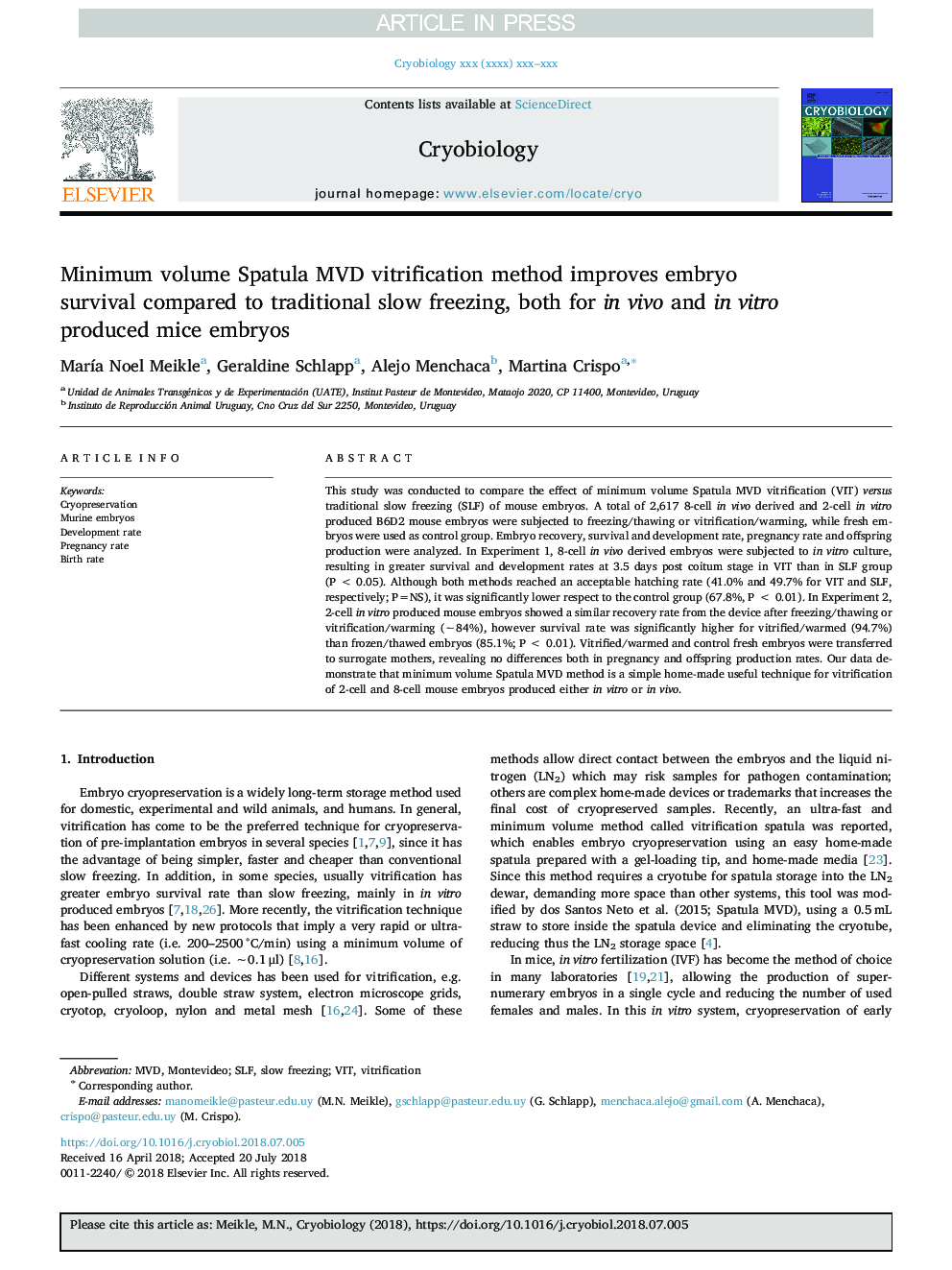| Article ID | Journal | Published Year | Pages | File Type |
|---|---|---|---|---|
| 10157779 | Cryobiology | 2018 | 5 Pages |
Abstract
This study was conducted to compare the effect of minimum volume Spatula MVD vitrification (VIT) versus traditional slow freezing (SLF) of mouse embryos. A total of 2,617 8-cell in vivo derived and 2-cell in vitro produced B6D2 mouse embryos were subjected to freezing/thawing or vitrification/warming, while fresh embryos were used as control group. Embryo recovery, survival and development rate, pregnancy rate and offspring production were analyzed. In Experiment 1, 8-cell in vivo derived embryos were subjected to in vitro culture, resulting in greater survival and development rates at 3.5 days post coitum stage in VIT than in SLF group (Pâ¯<â¯0.05). Although both methods reached an acceptable hatching rate (41.0% and 49.7% for VIT and SLF, respectively; P=NS), it was significantly lower respect to the control group (67.8%, Pâ¯<â¯0.01). In Experiment 2, 2-cell in vitro produced mouse embryos showed a similar recovery rate from the device after freezing/thawing or vitrification/warming (â¼84%), however survival rate was significantly higher for vitrified/warmed (94.7%) than frozen/thawed embryos (85.1%; Pâ¯<â¯0.01). Vitrified/warmed and control fresh embryos were transferred to surrogate mothers, revealing no differences both in pregnancy and offspring production rates. Our data demonstrate that minimum volume Spatula MVD method is a simple home-made useful technique for vitrification of 2-cell and 8-cell mouse embryos produced either in vitro or in vivo.
Keywords
Related Topics
Life Sciences
Agricultural and Biological Sciences
Agricultural and Biological Sciences (General)
Authors
MarÃa Noel Meikle, Geraldine Schlapp, Alejo Menchaca, Martina Crispo,
